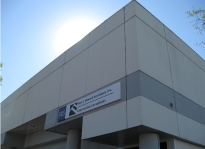California Builders Right To Repair Current Law Summary:
Current Law Summary: SB800 (codified as Civil Code §§895, et seq) is the most far-reaching, complex law regulating construction defect litigation, right to repair, warranty obligations and maintenance requirements transference in the country. In essence, to afford protection against frivolous lawsuits, builders shall do all the following:A homeowner is obligated to follow all reasonable maintenance obligations and schedules communicated in writing to the homeowner by the builder and product manufacturers, as well as commonly accepted maintenance practices. A failure by a homeowner to follow these obligations, schedules, and practices may subject the homeowner to the affirmative defenses.A builder, under the principles of comparative fault pertaining to affirmative defenses, may be excused, in whole or in part, from any obligation, damage, loss, or liability if the builder can demonstrate any of the following affirmative defenses in response to a claimed violation:
Construction Expert Witness Contractors Licensing
Guidelines Anaheim California
Commercial and Residential Contractors License Required.
Construction Expert Witness Contractors Building Industry
Association Directory
Local # 0532
77570 Springfield Ln Ste E
Palm Desert, CA 92211
http://www.desertchapter.com
Building Industry Association Southern California - Riverside County Chapter
Local # 0532
3891 11th St Ste 312
Riverside, CA 92501
Building Industry Association Southern California
Local # 0532
17744 Sky Park Circle Suite 170
Irvine, CA 92614
http://www.biasc.org
Building Industry Association Southern California - Orange County Chapter
Local # 0532
17744 Skypark Cir Ste 170
Irvine, CA 92614
http://www.biaoc.com
Building Industry Association Southern California - Baldy View Chapter
Local # 0532
8711 Monroe Ct Ste B
Rancho Cucamonga, CA 91730
http://www.biabuild.com
Building Industry Association Southern California - LA/Ventura Chapter
Local # 0532
28460 Ave Stanford Ste 240
Santa Clarita, CA 91355
Building Industry Association Southern California - Building Industry Association of S Ca Antelope Valley
Local # 0532
44404 16th St W Suite 107
Lancaster, CA 93535
Construction Expert Witness News and Information
For Anaheim California
Eighth Circuit Considers Judicial Estoppel in Hazardous Substance Release-Related Personal Injury Case
Utah Digs Deep and Finds “Design Defect” Includes Pre-Construction Geotechnical Reports
Groundbreaking on New Boulder Neighborhood
Connecticut Grapples With Failing Concrete Foundations
When Subcontractors Sue Only the Surety on Payment Bond and Tips for General Contractors
Proposed California Legislation Would Eliminate Certain Obstacles to Coverage for Covid-19 Business Income Losses
Design Immunity Does Not Shield Public Entity From Claim That it Failed to Warn of a Dangerous Condition
COVID-19 Response: California Occupational Safety and Health Standards Board Implements Sweeping New Regulations to Prevent COVID-19 in the Workplace
Florida Property Bill Passes Economic Affairs Committee with Amendments
What Is the Best Way to Avoid Rezoning Disputes?
Policing Those Subcontractors: It Might Take Extra Effort To Be An Additional Insured
The Clock is Ticking: Construction Delays and Liquidated Damages
Foundation Arbitration Doesn’t Preclude Suing Over Cracks
The Reptile Theory in Practice
Faulty Workmanship Exclusion Does Not Bar Coverage
Insurer's Motion to Dismiss Complaint for Collapse Coverage Fails
Congratulations to San Diego Partner Johnpaul Salem and Senior Associate Scott Hoy for Obtaining a Complete Defense Verdict!
Retired Judge Claims Asbestos in Courthouse gave him Cancer
Mid-Session Overview of Colorado’s 2017 Construction Defect Legislation
Consider the Risks Associated with an Exculpatory Clause
A Word to the Wise: The AIA Revised Contract Documents Could Lead to New and Unanticipated Risks - Part II
Florida Court of Appeals Holds Underlying Tort Case Must Resolve Before Third-Party Spoliation Action Can Be Litigated
Texas Law Bars Coverage under Homeowner’s Policy for Mold Damage
San Diego: Compromise Reached in Fee Increases for Affordable Housing
Lien Law Change in Idaho
Department of Transportation Revises Its Rules Affecting Environmental Review of Transportation Projects
The United States Court of Appeals, Fourth Circuit, Finds Wrap-Up Exclusion Does Not Bar Coverage of Additional Insureds
Background Owner of Property Cannot Be Compelled to Arbitrate Construction Defects
Nonparty Discovery in California Arbitration: How to Get What You Want
Insurers in New Jersey Secure a Victory on Water Damage Claims, But How Big a Victory Likely Remains to be Seen
Florida trigger
It’s a COVID-19 Pandemic; It’s Everywhere – New Cal. Bill to Make Insurers Prove Otherwise
What If Your CCP 998 Offer is Silent on Costs?
Putting for a Cure: Don’t Forget to Visit BHA’s Booth at WCC to Support Charity
Demonstrating A Fraudulent Inducement Claim Or Defense
Construction Law Client Advisory: What The Recent Beacon Decision Means For Developers And General Contractors
Boston Developer Sues Contractor Alleging Delays That Cost Millions
There’s Still No Amazon for Housing, But Fintech’s Working on It
The Complex Insurance Coverage Reporter – A Year in Review
The Contributors to This Blog Are Pleased to Announce That….
Anti-Concurrent Causation Clause Preserves Possibility of Coverage
Ruling Dealing with Constructive Changes, Constructive Suspension, and the Implied Covenant of Good Faith and Fair Dealing
TARP Funds Demolish Homes in Detroit to Lift Prices: Mortgages
PCL Sues Big Bank for $30M in Claimed NJ Mall Unpaid Work
Allegations Confirm Duty to Defend Construction Defect Claims
$24 Million Verdict Against Material Supplier Overturned Where Plaintiff Failed to Prove Supplier’s Negligence or Breach of Contract Caused an SB800 Violation
How to Protect a Construction-Related Invention
California Court of Appeal Makes Short Work Trial Court Order Preventing Party From Supplementing Experts
Suzanne Pollack Elected to Lawyers Club of San Diego 2021 Board of Directors
Temecula Office Secures Approval for Development of 972-Acre Community on Behalf of Pulte Homes


































































